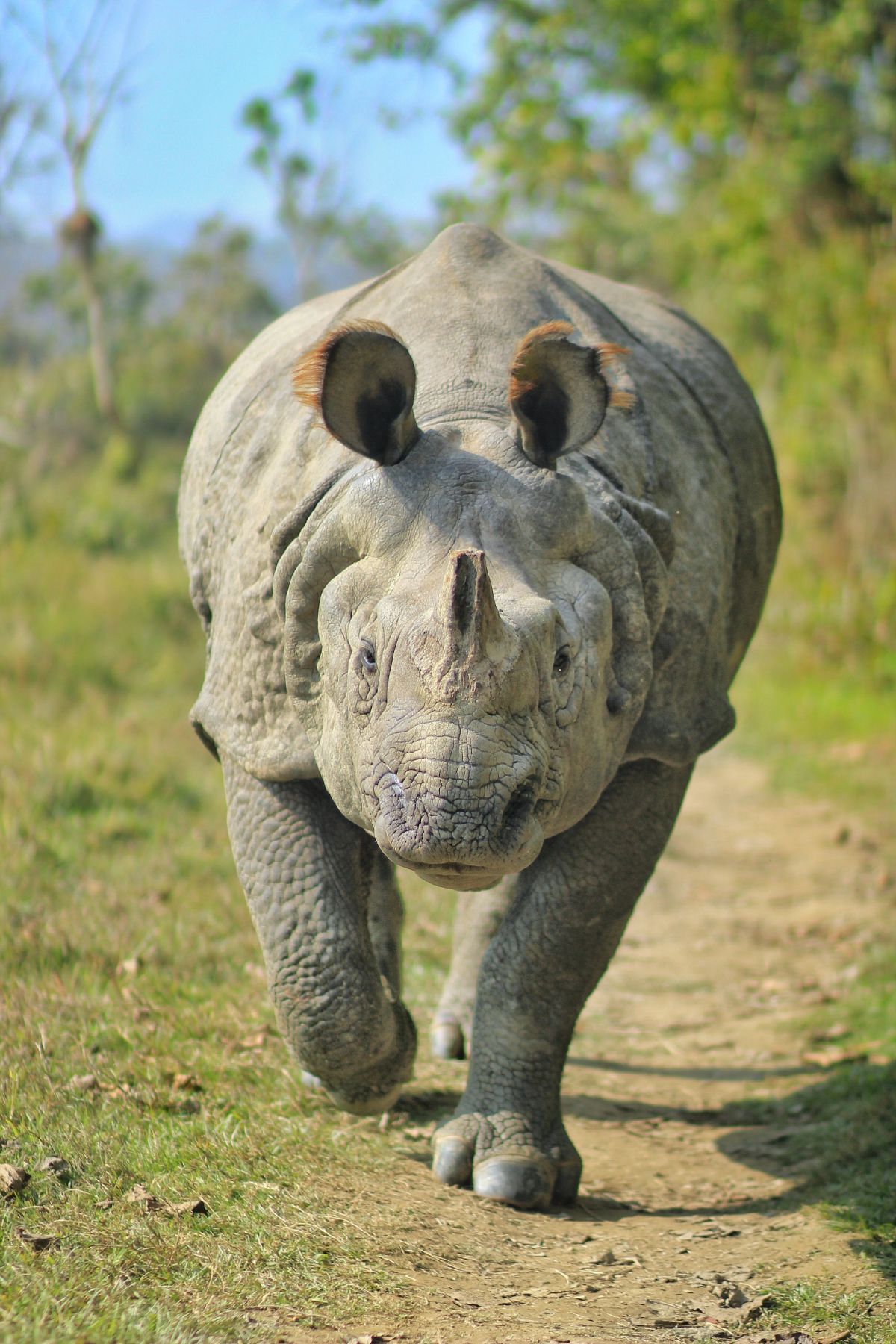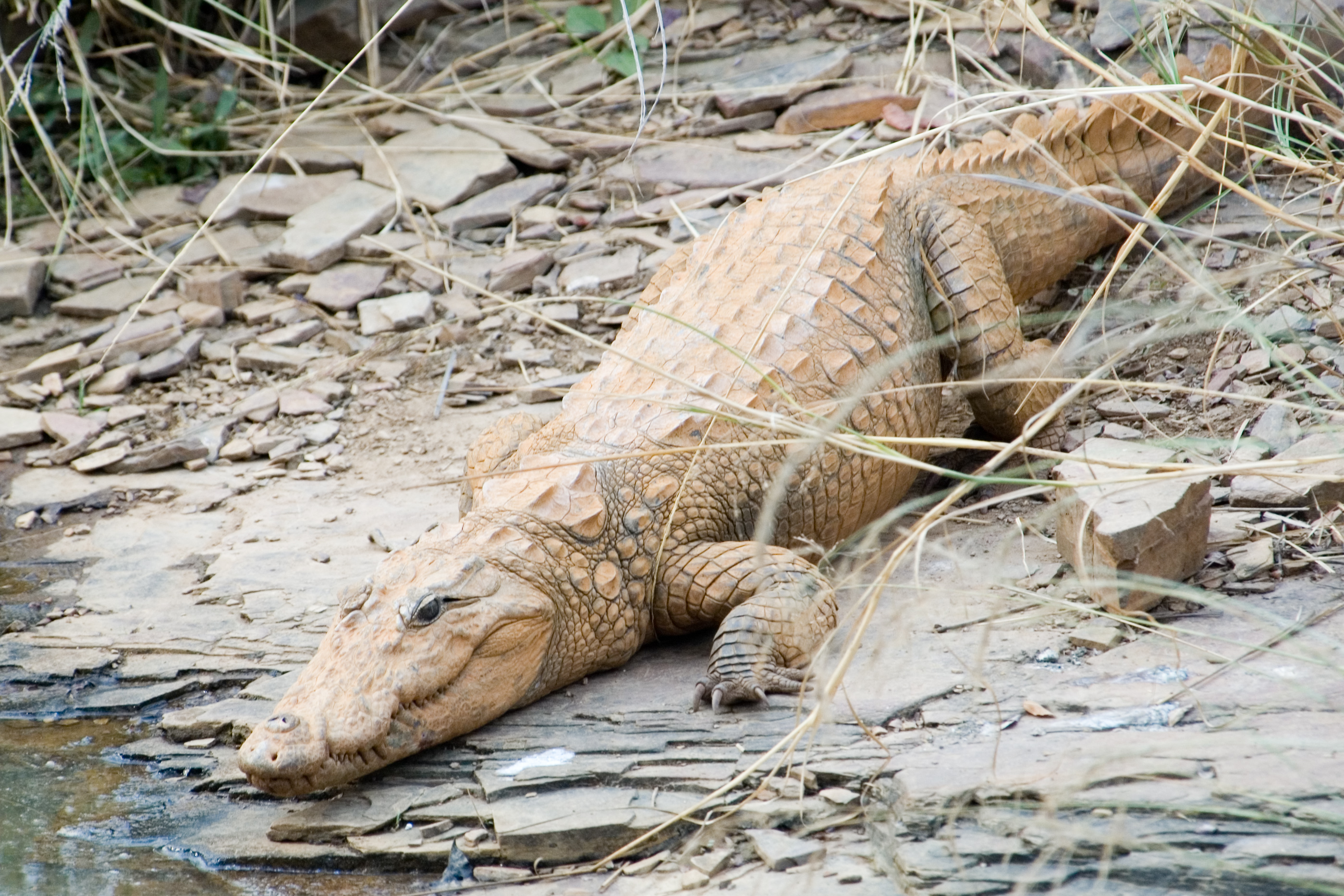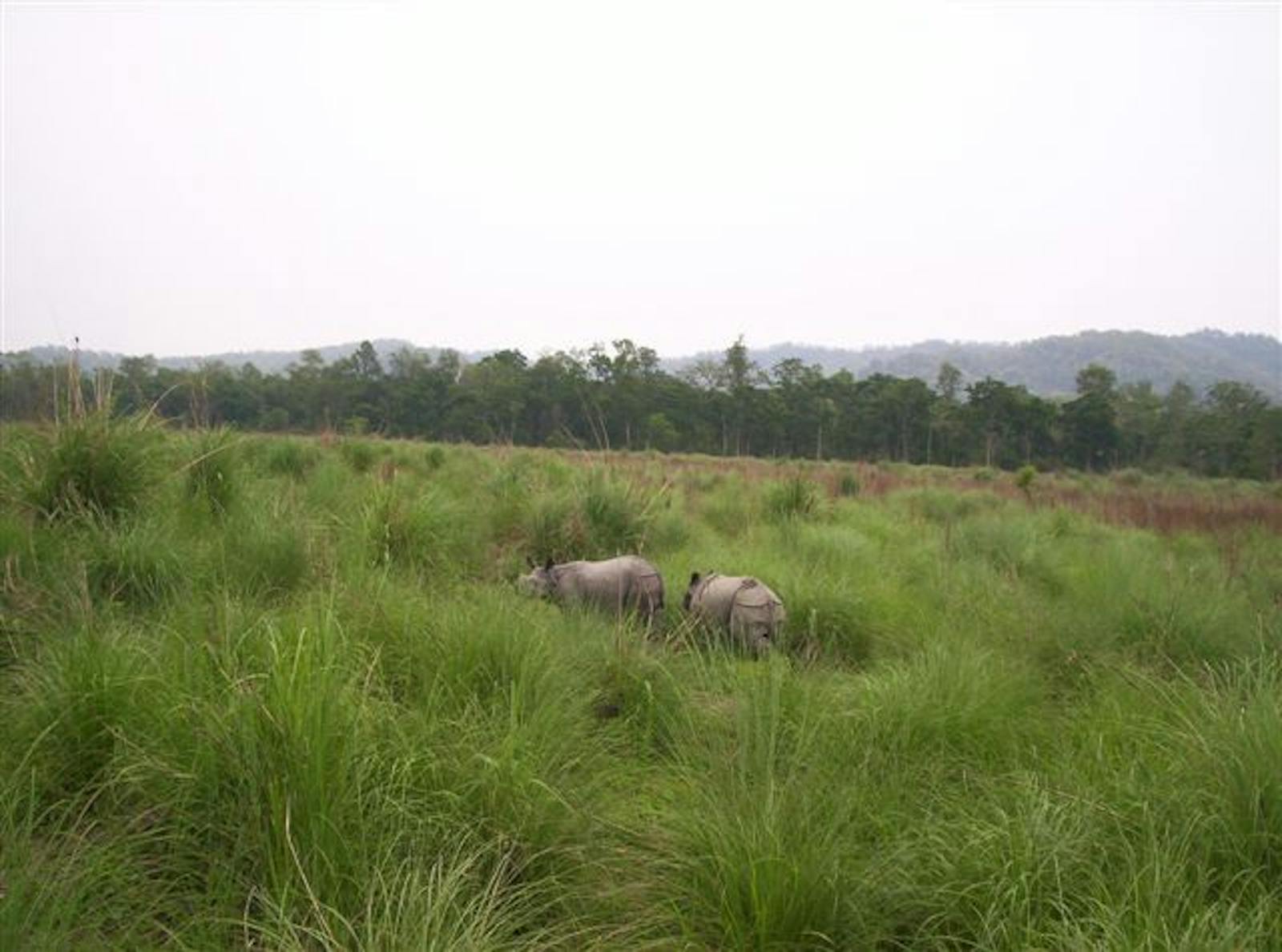Terai-Duar Savanna and Grasslands
The ecoregion’s land area is provided in units of 1,000 hectares. The protection goal is the Global Safety Net (GSN1) area for the given ecoregion. The protection level indicates the percentage of the GSN goal that is currently protected on a scale of 0-10. N/A means data is not available at this time.
Bioregion: Himalayan Mixed Forests & Grasslands (IM5)
Realm: Indomalaya
Ecoregion Size (1000 ha):
3,466
Ecoregion ID:
311
Protection Goal:
20%
Protection Level:
7
States: India, Nepal, Bhutan
The Terai-Duar Savanna and Grasslands ecoregion, at the base of the Himalayan Mountains, supports the world's tallest grasslands, some more than 7 m tall. These grasslands in the floodplains of the large rivers support a variety of deer species, from the small barking deer to mid-sized spotted deer—or ‘chital’—to sambar and swamp deer, the largest of Asian deer species. The ecoregion is also home to several of the larger populations of Greater one-horned rhinoceros. Meanwhile, the deer and wild boar are the primary prey for the large predators, especially the tiger.

The flagship species of the Terai-Duar Savanna and Grasslands ecoregion is the greater one-horned rhinoceros. Image credit: Lurey Rohit, Creative Commons
The ecoregion stretches from northwest India across and into the inner river valleys of southern Nepal and to southwest Bhutan. The defining vegetation features are the savannas and tall grasslands, with a mosaic of evergreen and deciduous broadleaf forests corresponding to different moisture conditions. The climate is hot, humid, and wet during the summer monsoon, with temperatures reaching 40ºC; it is cooler in the winter, with morning ground frost and a blanket of fog that can remain until late in the morning, adding to the chill.
The cycle of annual monsoon floods is critically important to maintaining the grasslands, because it clears and flushes the floodplain of encroaching trees, deposits a layer of sand and silt—the ‘alluvium’—that is carried down the Himalayas by the rushing rivers on the floodplain, and allows the grasses to regenerate rapidly after the floods recede—a process known as ‘succession’.
Aside from the globally important populations of tigers and rhinoceros, the ecoregion also supports important populations of Asian elephant and small, refuge populations of wild water buffalo, hispid hare, and pygmy hog. The Bengal florican is a Critically Endangered bustard, with only 75–96 mature individuals estimated to live in Nepal’s grasslands The rivers and their banks are important habitats for the rare gharial and mugger crocodile.

Mugger crocodile. Image credit: Paul Asmanm, Creative Commons
Because the floodplains are also highly suited for agriculture, the natural grasslands have been converted to rice paddies, sugar cane, mustard, and other vegetable crops. Perhaps less than 2% of the grasslands now remain as refuge fragments, conserved in Chitwan National Park, a World Heritage Site, as well as Shukla Phanta Wildlife Reserve, Dudhwa National Park, and Bardia National Park.
The Terai Arc Landscape project has strived to connect these protected areas through habitat corridors to allow tigers and rhinos to disperse among reserves[vi]. In Nepal the corridors are managed through a community forestry program, and in India through a system of Forest Reserves.
Population pressure due to humans migrating from the hills, attracted by productive agricultural prospects, continues. Demand for land remains high, challenging conservation efforts. Water diversions, dams, and riverbank constructions are changing natural river flows, especially disrupting the annual floods that maintain the floodplain grasslands, ox-bow lakes, and other wetlands on which wildlife depend.
Poaching, especially of tigers and rhinos, is controlled, but the threats remain imminent and require constant vigilance. Against this backdrop, the zero-poaching target in the ecoregion’s key parks is a remarkable achievement. The fact that the endangered populations of tigers and rhinoceros are now recovering is a positive conservation example to emulate across the region.
The priority conservation actions for the next decade will be to: 1) create an investment fund for the recurrent costs of conservation and anti-poaching programs; 2) continue reintroduction programs to build viable populations of endangered species within their historic range; and 3) continue to strengthen ecological connectivity among the reserves through empowering local communities and other means.
Citations
1. TAL Nepal Strategy and Action Plan (2015-2025). Ministry of Forests and Soil Conservation. Nepal.
2. Wikramanayake, E, E. Dinerstein, et al. 2002. Terrestrial Ecoregions of the Indo-Pacific: A Conservation Assessment. Island Press.
3. Thapa, K., Wikramanayake, E., Malla, S., Acharya, K.P., Lamichhane, B.R., Subedi, N., Pokharel, C.P., Thapa, G.J., Dhakal, M., Bista, A. and Borah, J., 2017. Tigers in the Terai: Strong evidence for meta-population dynamics contributing to tiger recovery and conservation in the Terai Arc Landscape. PloS one, 12(6), p.e0177548.


